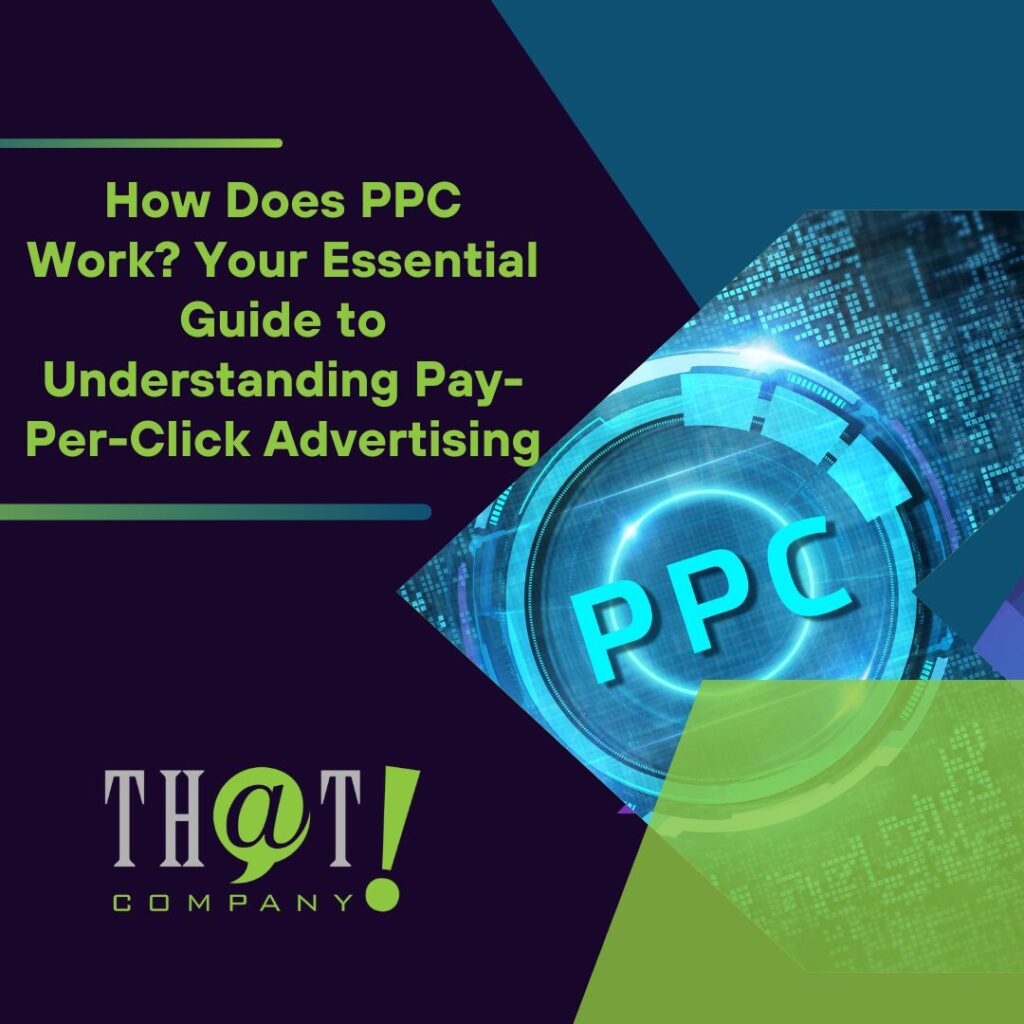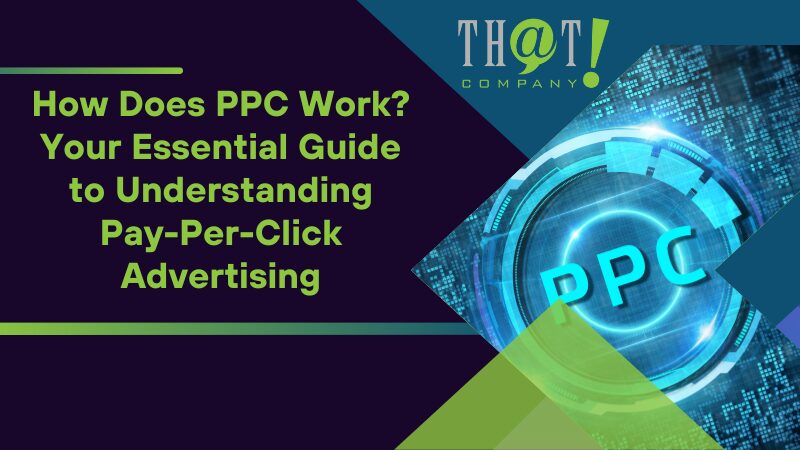
Welcome to a comprehensive guide to understanding the world of Pay-Per-Click (PPC) advertising. As the digital landscape expands, PPC continues to be an essential tool that businesses leverage to drive traffic and increase online visibility. But how does PPC work? How can you effectively manage PPC campaigns to achieve your marketing goals? Let’s delve into the mechanics of how PPC works, exploring its fundamentals, the mechanics behind it, its role in the broader context of digital marketing, and much more.
Key Takeaways
- PPC advertising is a model where advertisers pay a fee each time their ads are clicked. Ad positions and costs are determined by an algorithm considering budget, bid amount, quality, and relevance, delivering insights for improving campaigns.
- The PPC process hinges on choosing relevant keywords, crafting ad groups for better targeting, and ad auctions that determine placement and CPC. Google Ads is a major platform leveraging search and display network traffic.
- Effective PPC campaigns require compelling ads and optimized landing pages. They should be integrated with other digital marketing strategies like SEO for a holistic approach, with analytics and A/B testing crucial for performance enhancement.
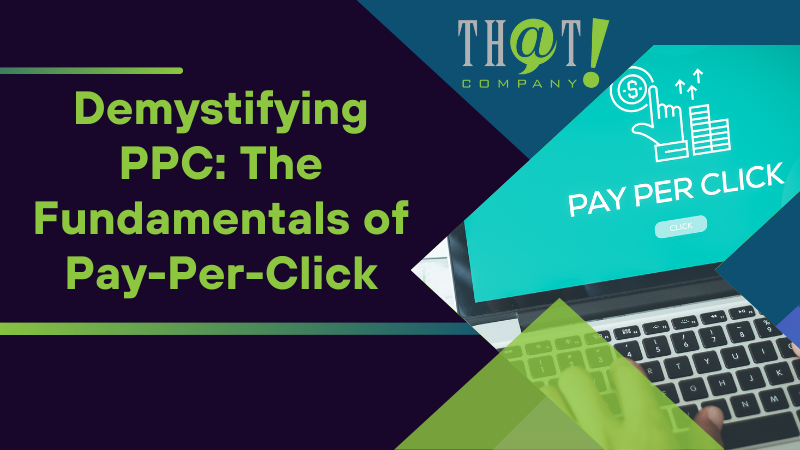
Demystifying PPC: The Fundamentals of Pay-Per-Click
Pay-per-click, or PPC, is a digital marketing model where a fee is paid by advertisers every time their ad is clicked. This model is instrumental in directing traffic to a website and enhancing its online presence. PPC is a part of search engine marketing, and it’s an online advertising model that you can use to get your ads in front of your target audience.
You may question how the positions of ads and their costs in PPC advertising are decided. Well, it’s all about the algorithm. Ad positions and costs in PPC advertising are determined by an algorithm that considers various factors, including:
- Budget
- Bid Amount
- Campaign settings
- Quality and relevance of the ad to the search query
Surveying the results of a campaign is vital as it offers beneficial insights into boosting site traffic via paid search. This allows you to understand and measure key PPC metrics such as clicks, cost per click (CPC), and clickthrough rate (CTR), which inform improvement strategies.
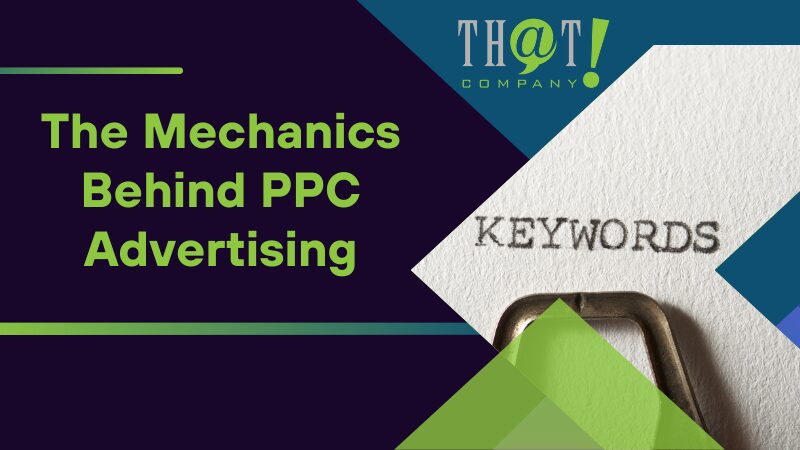
The Mechanics Behind PPC Advertising
We will now examine the inner workings of PPC advertising. It’s like a well-oiled machine, with many parts working together to achieve the desired results. The fundamental elements of the PPC advertising process encompass:
- The selection of pertinent keywords
- The creation of structured ad groups based on those keywords
- Engagement in ad auctions to determine the ad placement and cost per click.
We will now dissect these elements in more detail.
Choosing the Right Keywords
Selecting appropriate keywords sets your PPC campaign’s direction, much like a GPS. When choosing keywords for PPC advertising, it is important to consider factors such as high click-through rate (CTR), cost-effective cost-per-click (CPC), and the ability to effectively generate conversions to target the desired audience.
Yet, how can one improve the quality of their keyword lists? It’s like fine-tuning an instrument. Advertisers can enhance the quality of their keyword lists by:
- Leveraging data on cost-effective and profitable keywords
- Pausing underperforming ones
- Utilizing negative keyword lists to prevent ads from displaying on irrelevant searches.
Not to forget, long-tail keywords also hold significance due to their:
- Majority share in search traffic
- Specificity
- Lower competition
- Affordability
- Inclusion of relevant keywords
All of which can contribute to higher conversion rates in PPC campaigns.
Crafting Your Ad Group
Consider an ad group as a bouquet of different ads. Each flower represents a different keyword or ad, forming a beautiful arrangement that appeals to your audience. Ad groups are distinct clusters of ads within a PPC campaign activated by associated keywords. Their importance lies in enabling advertisers to categorize related keywords, landing pages, and text ads under a unified theme, ultimately leading to improved performance.
So, what’s the best way to set up efficient ad groups? It’s like setting the stage for a performance. When establishing ad groups, advertisers should take into consideration:
- Aligning the ad copy with users’ search intent
- Using a common structure such as one cluster per ad group
- Considering splitting ads into smaller clusters to produce targeted campaigns
This approach can potentially enhance click-through rates (CTR) and Quality scores.
Understanding the Ad Auction
The intriguing process of the ad auction decides which ads are displayed, and their placement. It’s like the nerve center of PPC advertising. An ad auction is how Google determines the most relevant ads to display on search results.
Yet, what influences an ad’s cost per click (CPC)? It’s all about the bid. The CPC is determined using a specific formula involving the competitor’s Ad Rank, your Quality Score, and a nominal amount to calculate the minimum cost required to outbid a competitor for a more favorable ad placement.
Additionally, PPC advertising offers a range of bid strategies, including manual bidding, allowing advertisers to set and modify bids, and enhanced CPC automatically adjusts bids based on the potential to generate clicks or conversions.
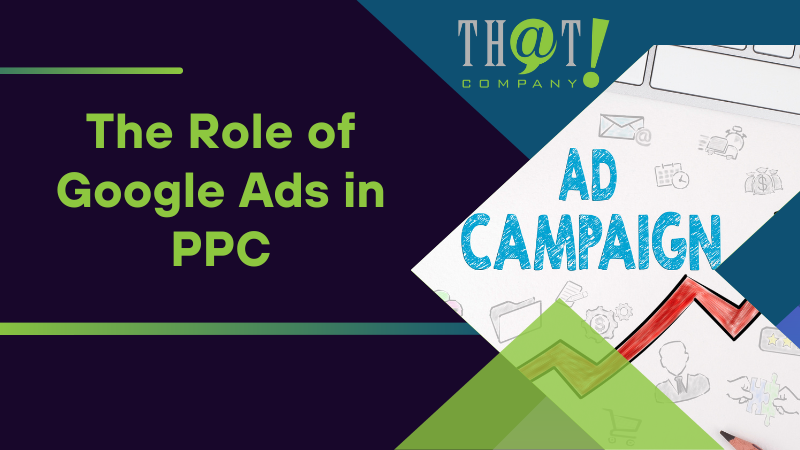
The Role of Google Ads in PPC
Having covered the fundamentals of PPC advertising, we’ll now shift our focus to Google Ads, a leading PPC platform. Google Ads is widely recognized as the leading PPC platform, commanding a substantial market share of 28%. It allows businesses to capitalize on the extensive traffic generated by Google’s search engine and display network for their advertising endeavors.
Let’s explore the realm of Google Ads, search ads, and ad spend.
Setting Up a Google Ads Account
Creating a Google Ads account paves the way for numerous PPC opportunities. It’s the first step in launching a PPC campaign. Once you’ve set up your account, you’ll need to provide your billing information, which determines the charges for ads based on user clicks.
Yet, how does one establish a campaign budget in Google Ads? It’s like setting a spending limit on your credit card. Advertisers can determine their campaign’s average daily budget according to their desired spending amount. Google Ads can expend up to double the daily budget on a given day, but rest assured, Google Ads adheres to the monthly budget set by the advertiser and will not exceed it.
Deciphering Ad Rank and Quality Score
Ad Rank and Quality Score are performance indicators for your PPC campaign, much like a report card. Ad Rank represents a numerical value that plays a crucial role in determining the positioning of an advertisement within a search engine’s results page. This value is shaped by various factors, such as the bid amount and the Quality Score associated with the ad.
Quality Score, on the other hand, refers to the score assigned by search engines to an ad, taking into account factors like:
- clickthrough rate (CTR)
- keyword relevance
- landing page quality
- past performance on the search engine results page (SERP)
It plays a crucial role in determining the user experience offered by the ad, impacting its placement and the cost per click.
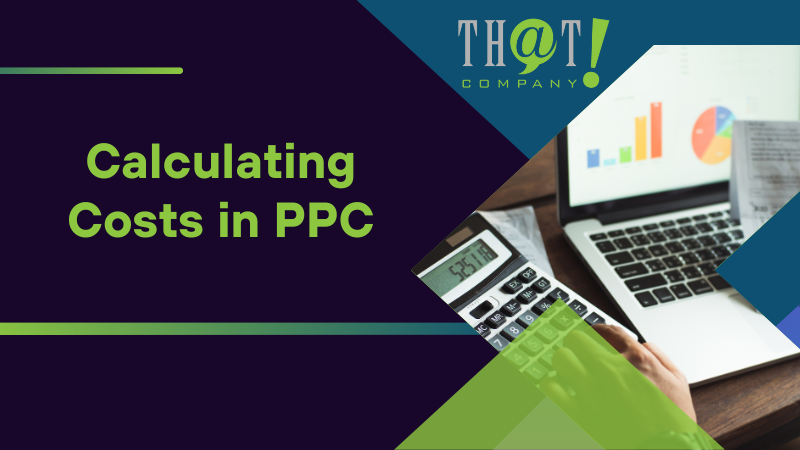
Calculating Costs in PPC
Let’s discuss the expenses associated with PPC. PPC costs encompass the comprehensive expenses linked to pay-per-click advertising and are influenced by budget constraints, keyword bidding, and ad performance.
Let’s dissect these factors to understand how to manage PPC expenditure effectively.
Budgeting for Your PPC Campaign
Allocating a budget for a PPC campaign is akin to planning one’s monthly expenses. Establishing a realistic budget for PPC campaigns is crucial to attaining the desired results. The process is simple. Advertisers can determine their campaign’s average daily budget according to their desired spending amount.
What happens if you overshoot your budget? Don’t worry. Google Ads can expend up to double the daily budget on a given day, but it adheres to the monthly budget set by the advertiser and will not exceed it. This ensures that you’re always in control of your spending.
Bidding Strategies Explained
Bidding plays a pivotal role in PPC advertising. It’s like placing a bet on your favorite horse in a race. The bid represents the amount an advertiser is willing to pay for each:
- click
- impression
- conversion
- view
The concept of bidding strategies in PPC advertising encompasses the various approaches employed to ascertain the advertiser’s willingness to pay for each click, impression, conversion, or view.
How can the optimal bidding strategy for your campaign be chosen? It’s like selecting the right tool for the job. Advertisers should experiment with various bidding strategies to identify the one that best aligns with their specific campaign objectives, whether to maximize clicks or conversions. And remember, there are similar bidding options available on other PPC platforms, enabling advertisers to customize their strategies based on platform-specific features and audiences.
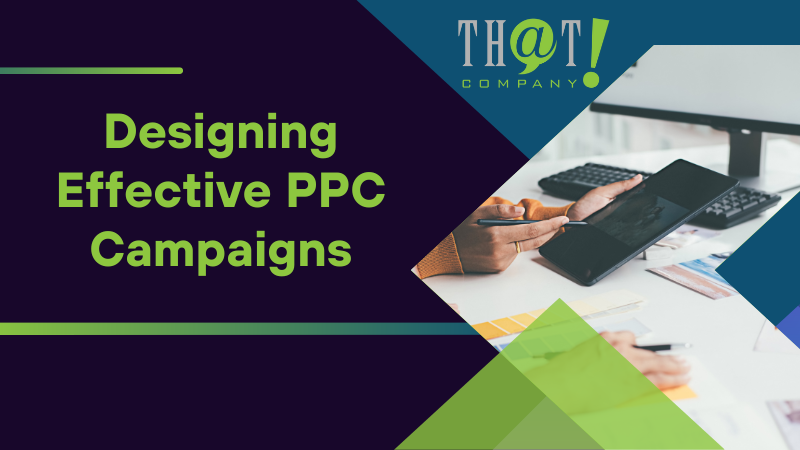
Designing Effective PPC Campaigns
Creating successful PPC campaigns is akin to crafting a masterpiece. It’s not just about the colors, shapes, message, and story. Effective campaign management and relevance significantly influence a PPC campaign’s success.
Let’s examine how to create an engaging PPC ad and optimize landing pages.
The Anatomy of a Compelling PPC Ad
Producing an appealing PPC ad is similar to crafting an engaging headline. It should grab the reader’s attention and persuade them to click. An effective PPC ad should incorporate:
- A well-defined headline
- A compelling description
- A clear display URL
- A relevant destination URL
Yet, how can the ad be made more engaging and relevant? It’s like adding spices to a dish. Strategies to enhance the description in a PPC ad for improved click-through rates include:
- Focusing on keyword targeting
- Improving ad copy
- Conducting testing
- Using ad extensions
- Adding negative keywords
- Considering the use of dynamic keyword insertion in the ad text.
Landing Page Optimization
A well-optimized landing page should:
- Be attractive
- Be user-friendly
- Prompt visitors to take action
- Exhibit relevance
- Be designed to prompt visitors to take action
How can a landing page be optimized for PPC campaigns? It’s like decorating a room. Recommended best practices for optimizing a PPC landing page’s content and copy include:
- Creation of unique landing pages for each campaign
- Alignment of headline, offer, and call-to-action
- Utilization of creative design and images
- Crafting brief and compelling copy
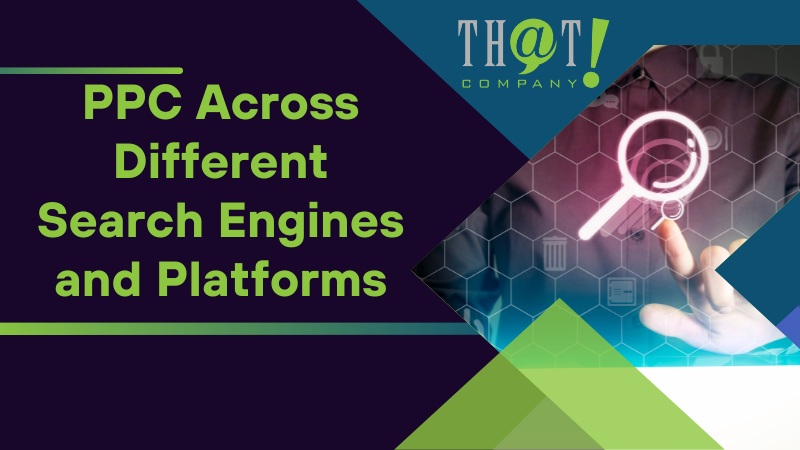
PPC Across Different Search Engines and Platforms
PPC advertising isn’t confined to just Google. It can be leveraged across multiple search engines and platforms, such as Bing Ads and social media sites.
Let’s discuss how diversifying PPC campaigns can aid in reaching a broader audience.
Diversifying with Bing Ads and Others
Diversification is vital in any investment strategy, including PPC. Bing Ads is a pay-per-click (PPC) platform designed for advertising on the Bing search engine. Diversifying PPC campaigns with platforms like Bing Ads can broaden the reach to a larger audience.
What makes Bing Ads worthy of consideration? Here are a few reasons:
- Bing Ads offers a slightly lower cost-per-click (CPC) than Google Ads.
- They have a reach that targets a slightly more mature and educated demographic, with an average age of 45 and a higher percentage of married users.
- This suggests that Bing Ads could be advantageous for targeting specific audiences.
Leveraging Social Media Platforms for PPC
Today, social media has emerged as a potent platform for advertising. One of the social media platforms that offers PPC advertising is Facebook. Social media platforms provide distinctive targeting options and ad formats for PPC advertising, including images, videos, and text ads.
How is it possible to optimize PPC on social media? It’s like tailoring a message to suit your audience. Retargeting involves remarketing to individuals based on their site visits or contact lists. Lookalike Audiences, on the other hand, generate an audience with similar characteristics to your existing marketing list, thereby broadening your targeting capabilities.

Tracking and Improving Your PPC Performance
Keeping track of and enhancing PPC performance is similar to using a fitness tracker. It helps you understand where you stand and how you can improve. Analyzing the performance of PPC ads is crucial as it provides valuable insights and contributes to improving ad campaigns, ultimately helping to create a more effective campaign strategy.
Let’s delve more into this subject.
Analytics and Reporting Tools
Analytics and reporting tools resemble the dashboard of a car. They provide you with all the vital information you need. The recommended analytics and reporting tools for PPC include:
How can Google Analytics be integrated with a Google Ads account? It’s like syncing your phone with your computer. Here’s how to do it:
- Within your Google Ads account, navigate to the Admin icon.
- Access Linked accounts.
- Under ‘From Google,’ locate ‘Google Analytics (UA)’ and proceed to the Details section.
- Here, you will be presented with a list of Google Analytics properties you can access.
- Subsequently, link the desired properties you intend to utilize for tracking purposes.
Refining Your Approach with A/B Testing
A/B testing is analogous to conducting a scientific experiment. It allows you to test different variables and identify what works best. A/B testing in the context of PPC campaigns involves the systematic testing of different variations of ads or campaign elements to identify the most effective performer.
How does A/B testing improve the performance of PPC ads? It’s like trying on different outfits to see what looks best. Utilizing A/B testing can enhance PPC ad performance by providing the opportunity to test various ad elements, including:
- Headlines
- Ad copy
- Images
- Calls-to-action
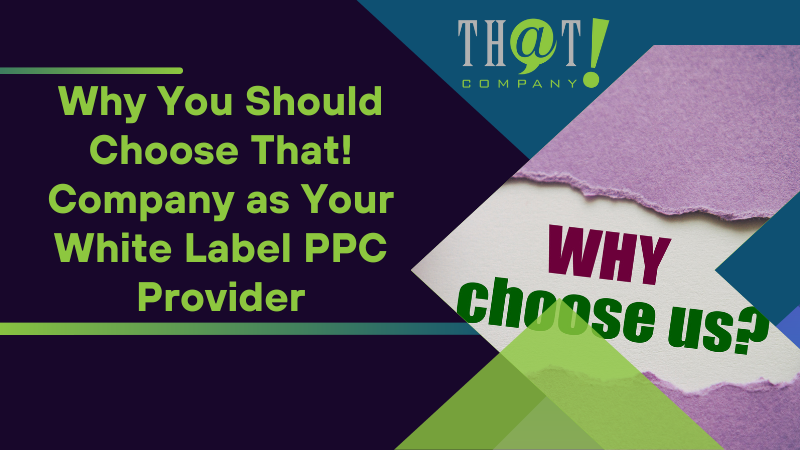
Why You Should Choose That! Company as Your White Label PPC Provider
Opting for white label services is akin to choosing a partner. You want someone who understands your needs and can deliver results. That! Company places great importance on its reputation and Google Premier Partner status, which reflects its commitment to delivering exceptional results in PPC management.
What makes That! Company a good choice for your white label PPC provider? It’s like choosing a reliable partner. Their white label PPC service offers:
- A specialized team of professionals
- Thorough campaign oversight
- Frequent strategic discussions
- Ongoing improvements
And the best part? That! Company’s white label PPC services are priced competitively to provide a significant margin for their clients while maintaining the delivery of high-quality services. Whether you’re looking for a comprehensive solution or individualized strategies, their expertise as a white label digital marketing agency ensures that your brand receives top-notch service tailored to your specific needs.
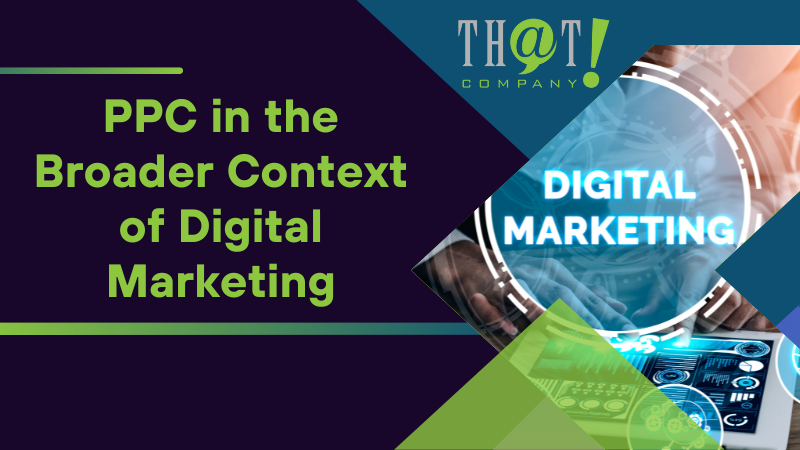
PPC in the Broader Context of Digital Marketing
PPC advertising isn’t merely a standalone strategy. It can be integrated with other digital marketing strategies to form a comprehensive digital marketing strategy for businesses. Let’s examine how PPC can be combined with email, content, and inbound marketing to optimize results.
PPC vs. SEO: Complementary Strategies
PPC and SEO, including search engine optimization, are comparable to two facets of the same coin. They both aim to drive traffic to your website, but they do it in different ways. PPC encompasses paid search and other channels, such as paid social and display, whereas SEO enhances a website’s ranking in organic search engine results.
So, how can PPC and SEO work in synergy? It’s like using both a map and a compass for navigation. PPC effectively complements SEO by providing the opportunity to manage the brand narrative comprehensively and with a more assertive, headline-centric approach.
Integrating PPC with Other Marketing Efforts
Merging PPC with other marketing efforts is akin to blending diverse ingredients to concoct a delightful dish. Each ingredient adds its flavor, and together, they create something exceptional. PPC can enhance the effectiveness of email marketing campaigns by:
- Utilizing it to grow your email list
- Targeting PPC audiences with uploaded email lists
- Experimenting with email offers
- Testing PPC creatives
But what about content marketing? It’s like adding a story to your marketing mix. Content marketing is crucial in a PPC strategy as it enriches content campaigns, directs traffic to the website’s content, and naturally draws the intended audience.
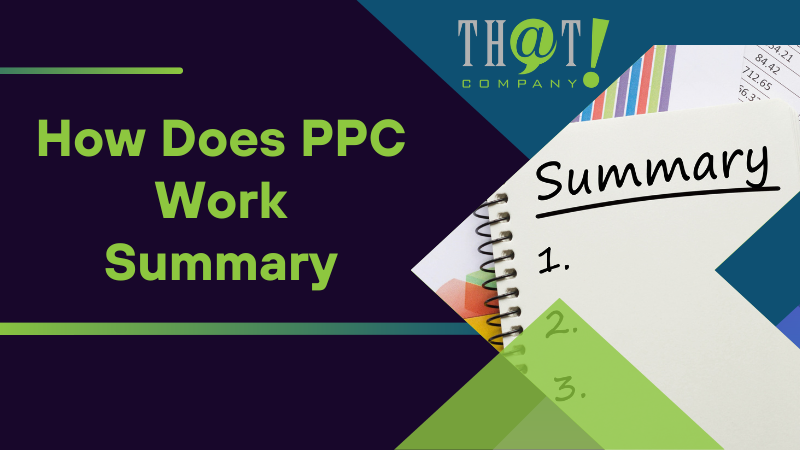
Summary
In conclusion, understanding PPC is instrumental in driving traffic to your website and increasing online visibility. Every detail matters, from choosing the right keywords and crafting compelling ad copy to monitoring performance and conducting A/B tests. Diversifying your PPC campaigns across various platforms can help you reach a wider audience, and integrating PPC with other marketing efforts can create a comprehensive digital marketing strategy for your business. So, whether you’re new to PPC or an experienced marketer, there’s always something new to learn and implement in your PPC campaigns. Here’s to your success in the fascinating world of PPC advertising!
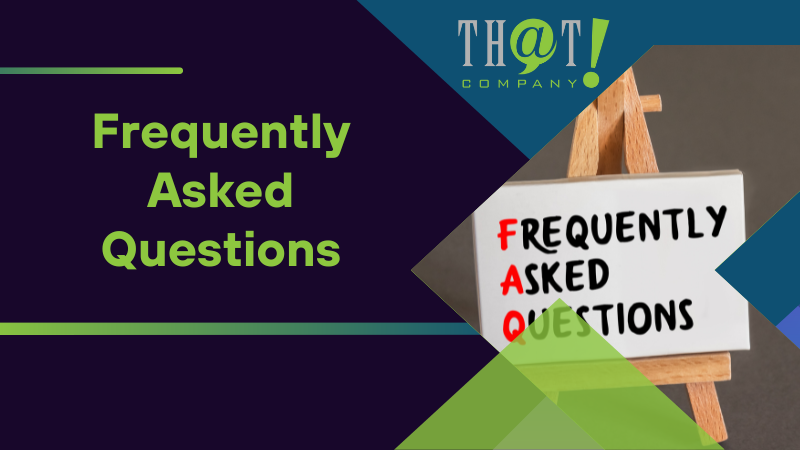
Frequently Asked Questions
How does PPC work on Google?
PPC on Google works through Google Ads, where advertisers bid on keywords and their ads appear at the top of search engine results pages when those keywords are searched for. This allows businesses to pay only when someone clicks on their ad to visit their site or call their business.
How do you profit from PPC?
You can profit from PPC by displaying ads on your website and earning money when someone clicks on them. Companies pay PPC ad networks to advertise through their network, providing potential revenue for your site.
How does PPC management work?
PPC management involves implementing and optimizing PPC campaigns to maximize results, typically handled by an in-house team, agency, or specialist. It includes tasks such as competitor analysis and strategic ad placement.
What are the benefits of diversifying PPC campaigns across various platforms?
Diversifying PPC campaigns across various platforms, such as Bing Ads and social media sites, can help businesses reach a wider audience and customize their campaigns to specific marketing goals. This enables businesses to take advantage of unique targeting options and ad formats.
How does A/B testing help in improving PPC ad performance?
A/B testing helps improve PPC ad performance by allowing advertisers to test different variations of ads and campaign elements, identifying the most effective performer, and providing valuable insights for data-driven decision-making. This can lead to optimized ads.

